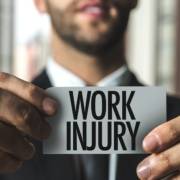Healthcare employees are a prime target for on-site injury. The main reason is their job consists of manual labor that usually deals with people. Activities such as lifting/handling human patients are common in the workplace for healthcare employees. One thing that needs to be addressed is safe-patient handling.
It is no surprise then that the main reasons for lost work and worker injuries in the healthcare industry is patient handling. Patient handling injuries makeup over 30% of workplace injuries and cost $1.66 billion in WC claims every year, according to Liberty Mutual data from the U.S. Bureau of Labor Statistics. That does not account for the billions every year spent on medical treatment by the workers themselves. So what are the ways that healthcare workers can maintain their current work duties yet avoid the risk of constant injuries? Well, here are 10 ways/tips to execute safe lifting and patient handling, according to OSHA.
Mechanical Lifting is Safe Patient Handling
Mechanical lifting is not only safer for the workers’ health, it is safer for any patients needing assistance.
Healthy Workers Should Still Not be Lifting Patients
Just because an employee has no previous injuries does not mean they are cleared to carry fully-grown people. Experts say less than 40 pounds is satisfactory for any employee’s heaviest lift.
Manually Lifting Patients can Actually be More Time-Consuming
If the job-site has mechanical lifting technology on-site and nearby, manually lifting may actually be more time-consuming. Do not worry if it takes an extra minute to retrieve/set up the technology. This is much safer than having a load of employees attempt to pick up and lift a patient.
Manual Lifting Costs More in the Long Run
While the mechanical lifting machines cost a pretty penny, medical injuries stemming from manual lifting could end up costing more. Back injury treatment for healthcare workers cost $20 billion every year. Factor in the billions in WC claims, and the lost days of worker productivity. Then, it makes the decision more clear that mechanical lifting is cheaper and more productive.
Learning Good Body Posture for Lifting Does Not Equal Less Injuries
Unfortunately, no matter how much you train to correctly lift a patient manually, it will never be as safe as mechanical lifting. There is no such technique that will teach how to safely lift a patient as our bodies were not built to lift another person.
Management Support
Having company-wide approval for a switch mechanical lifting is a positive step forward. This will help expedite the process of installing new mechanical lift devices without management backlash.
Assessing Potential Hazards
Finding the most hazardous areas of the workplace is crucial to implementation of mechanical lifting. Picking where to install these devices at the most efficient spots for the workers can make a huge difference.
Implementing a Committee to help With Safe Patient Handling
Creating a workers-based committee to help with the implementation of a safe patient handling program can help your company. After all, they are the most knowledgeable on the subject and can provide invaluable insight.
Education on Mechanical Lifting
Of course, mechanical lifting can only be as safe as the one that is operating the machine! Make sure your frontline healthcare workers are fully trained in using the technology.
Monitoring the Implementation of the New Safe Patient Handling
Once the mechanical lifting technology is in-place, that does not necessarily mean the end of the discussion. Management and workers alike must constantly evaluate the efficiency of the devices and judge whether or not another change must be made.
All of these steps and tips obviously lean towards the use of mechanical lifting devices over manual lifting. Following these steps can save your employees injuries and your company billions in claims. Remember, your employees’ health and safety must come first as well as your clients, so do the right thing and invest in the future of healthcare.





 Photo by Markus Spiske on Unsplash
Photo by Markus Spiske on Unsplash